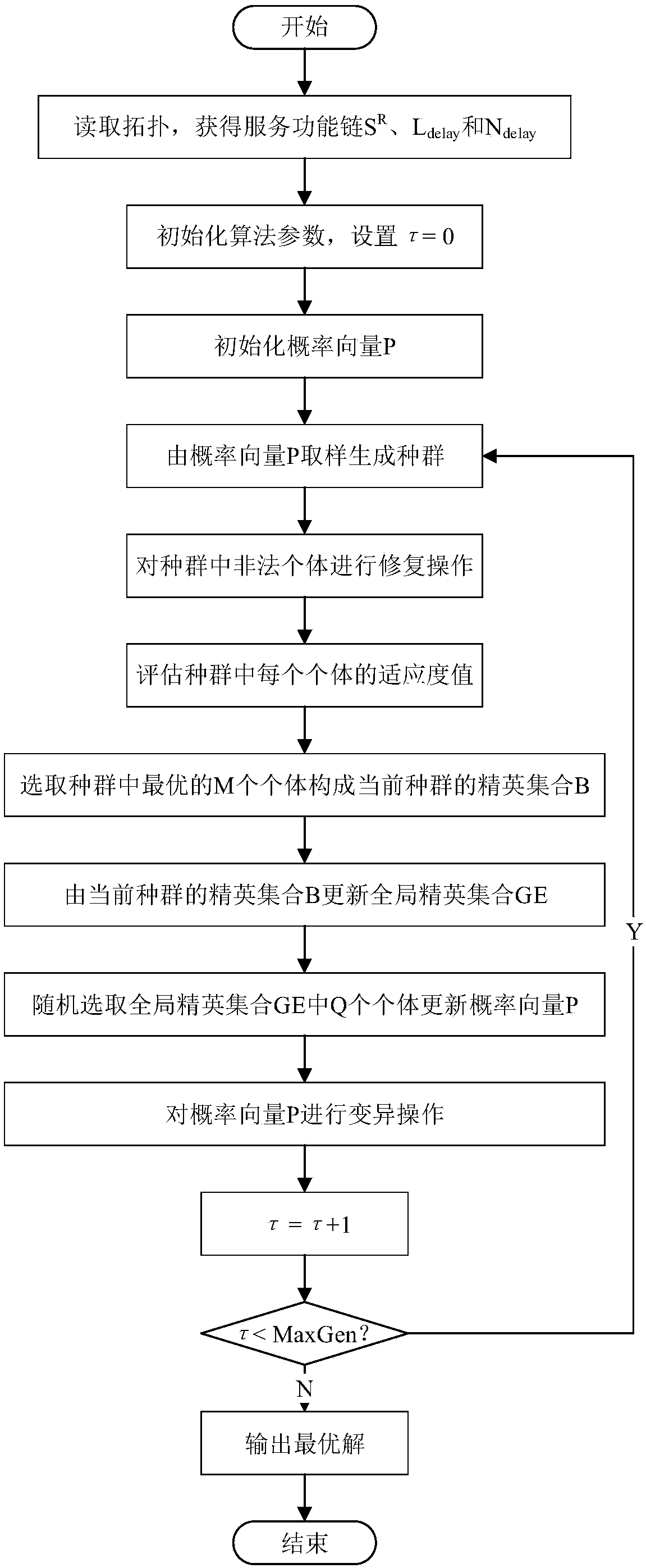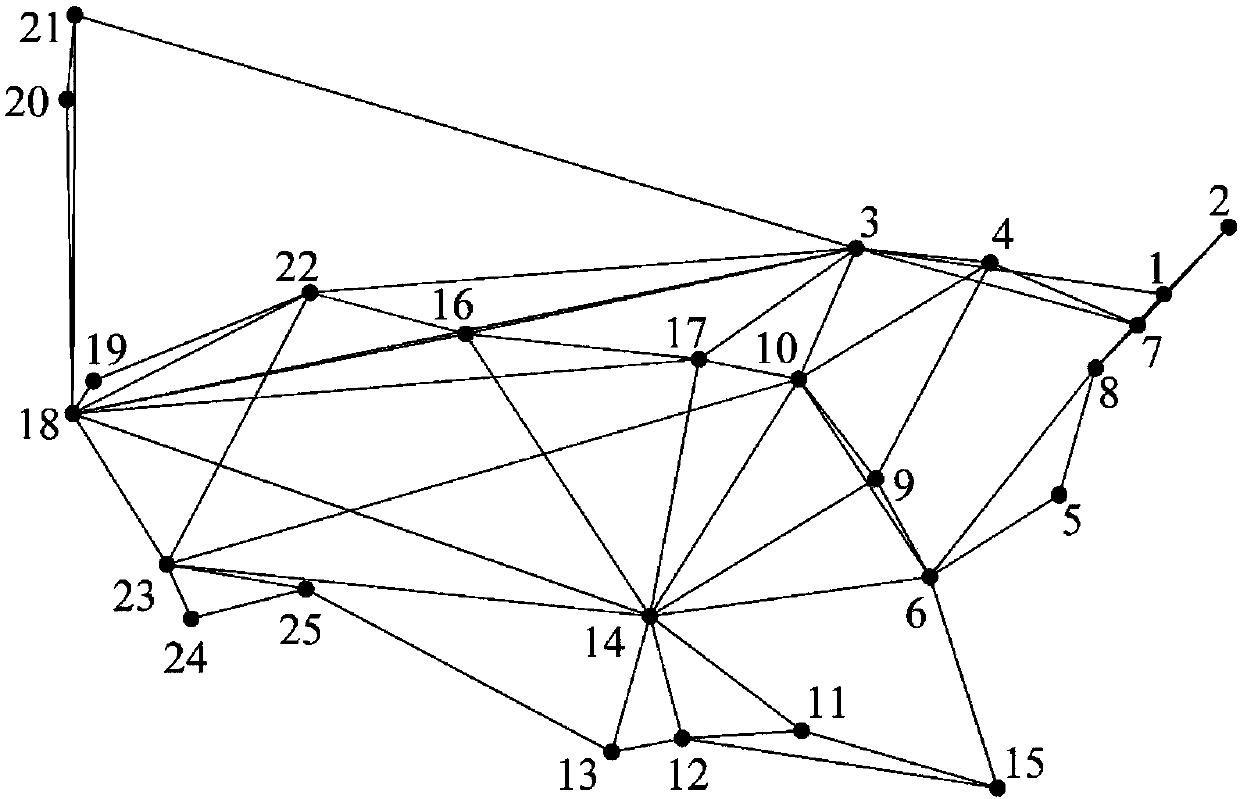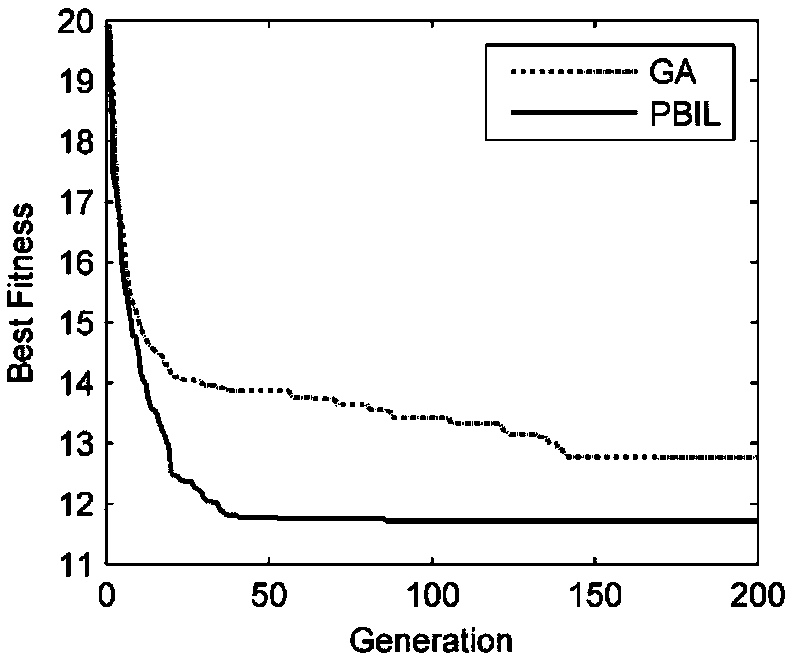Virtualized network function placement method based on population-based incremental learning algorithm
A technology of virtual network function and incremental learning algorithm, applied in the field of network transmission technology and virtualization, can solve the problems of increasing communication services, consuming large capital costs and operating costs, and dealing with the diversification of communication services, and reducing delays. , significant effect
- Summary
- Abstract
- Description
- Claims
- Application Information
AI Technical Summary
Problems solved by technology
Method used
Image
Examples
specific Embodiment
[0077] Attached below figure 2 To illustrate the process of service function chain placement. In scenario one, we use the attached figure 2 Represents the topology AttMpls, which has 25 nodes and 57 links. In the service function chain required by a network service, the number of VNFs is set to 5, assuming that the φth VNF is denoted as s φ (1≤φ≤5). Assume that each VNF in the service function chain has 6 deployable nodes, and the position of deployable nodes is γ φω (1≤φ≤5, 1≤ω≤6). in:
[0078] the s 1 The corresponding six node numbers are {5, 7, 10, 13, 23, 25};
[0079] the s 2 The corresponding six node numbers are {3, 12, 15, 17, 22, 23};
[0080] the s 3 The corresponding six node numbers are {1, 3, 6, 20, 22, 24};
[0081] the s 4 The corresponding six node numbers are {1, 7, 12, 16, 19, 24};
[0082] the s 5 The corresponding six nodes are numbered {2, 5, 6, 14, 18, 21}.
[0083] A possible example of a successful service function chain placement is a...
Embodiment
[0098] In order to verify the feasibility and high efficiency of the method of using PBIL algorithm to solve the VNF-P problem in the present invention, we conducted a simulation experiment and compared the performance of the algorithm with GA. Below are some related introductions.
[0099] (1) Parameter setting:
[0100] The present invention randomly generates service functions and node locations where each VNF can be deployed. Calculate the link delay L according to the coordinates and links of the nodes in the topology delay (δ x,y ), randomly generated VNF on the deployable node α φ The node processing delay N required for the above processing delay (α φ ). These three parameters are used as input parameters of the algorithm in both GA and PBIL.
[0101] Each bit of the probability vector P in PBIL is initialized to 0.5, the learning factor LR is initialized to 0.1, and the mutation probability P of each bit of the probability vector P mutation Initialize it to 0....
PUM
 Login to View More
Login to View More Abstract
Description
Claims
Application Information
 Login to View More
Login to View More - R&D
- Intellectual Property
- Life Sciences
- Materials
- Tech Scout
- Unparalleled Data Quality
- Higher Quality Content
- 60% Fewer Hallucinations
Browse by: Latest US Patents, China's latest patents, Technical Efficacy Thesaurus, Application Domain, Technology Topic, Popular Technical Reports.
© 2025 PatSnap. All rights reserved.Legal|Privacy policy|Modern Slavery Act Transparency Statement|Sitemap|About US| Contact US: help@patsnap.com



